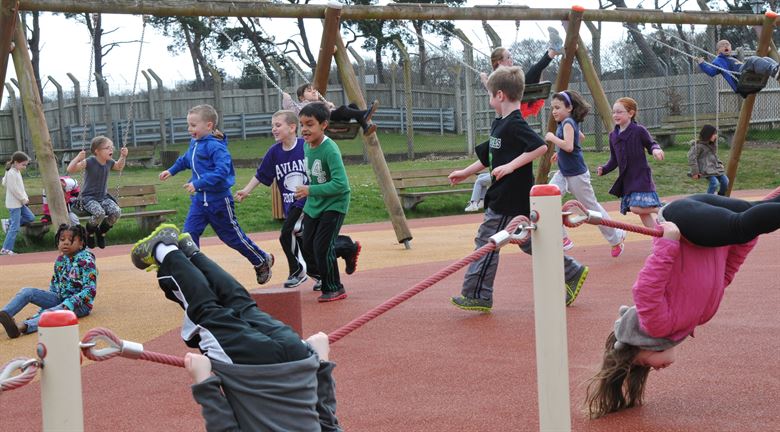A recent article by Canadian Mark R. Beauchamp and his colleagues at the University of British Columbia highlights possible strategies to improve preventative mental health approaches in schools. Their article, published in JAMA Psychiatry, suggests that the incorporation of physical activity into the student workday may improve student achievement and prevent mental health issues in children.
“Because of the compelling evidence that now exists linking physical activity to improved cognitive function, as well as the capacity for physical activity to reduce acute and chronic stress and improve general markers of mental health, it is critical that this gap be addressed by ensuring that regular physical activity opportunities are provided for and accessed by older adolescents,” Beauchamp and his coauthors write.
 Beauchamp and his team highlight the link between adolescence and increased mental health symptomology. Compounding demands of academic stress, social pressure, and changing hormones are a normative experience for most adolescents. However, a large body of research suggests that youth who have experienced childhood trauma or other adverse childhood experiences (ACEs) are more likely to exhibit serious mental health concerns in late adolescence. Beauchamp and his colleagues highlight the school system’s role in providing an environment that addresses the increasing rate of mental health concerns at the high school level.
Beauchamp and his team highlight the link between adolescence and increased mental health symptomology. Compounding demands of academic stress, social pressure, and changing hormones are a normative experience for most adolescents. However, a large body of research suggests that youth who have experienced childhood trauma or other adverse childhood experiences (ACEs) are more likely to exhibit serious mental health concerns in late adolescence. Beauchamp and his colleagues highlight the school system’s role in providing an environment that addresses the increasing rate of mental health concerns at the high school level.
A typical route for youth dealing with serious mental health symptomology is psychotherapy and psychotropic medication. However, critiques of the mental health system argue that more harm than good may result from psychiatric care. Youth may feel isolated by peers and may internalize their struggles as their own fault. Voices in the field have highlighted the need for a trauma-informed approach to mental health care, which, while vague, seeks to acknowledge an individual’s symptoms are a result of circumstances versus an individual pathology.
In Beauchamp’s article, one piece of this trauma-informed care is a preventative approach. In particular, integrating physical activity throughout the school day, not just in designated gym classes, to encourage the use of physical movement as a skill for self-regulation in academic and social settings. The researchers suggest three ways for this to be done:
- Activity Breaks, used in regular educational settings to provide time to refocus and increase the self-regulation of mood;
- The Daily Mile, requiring minimal time and resources and encouraging daily involvement and encouragement from peers;
- Walking Meetings, which may support the inclusion of students and increased cognitive functioning.
While some critique psychical exercise as a band-aid approach to a bigger problem, research suggests regular physical activity may prevent the symptoms of depression. Further, some highlight the fact physical exercise is missing from depression guidelines, leading to an overreliance on pharmaceutical care.
The integration of physical activity into the school day will not serve to address all issues related to mental health. However, these changes may represent one piece in the larger puzzle of addressing mental health symptoms in adolescents. Shifting the school system to address mental health in an integrated way may serve to bring about more substantial cultural shifts. The researchers add:
“An increasing body of longitudinal and experimental evidence points to the capacity of regular physical activity to contribute to positive mental health outcomes and buffer against ill health. Previous work suggests that, for many individuals, acute bouts of physical activity can alleviate some of the deleterious emotional effects of experiencing stressful events.”
****
Beauchamp, M. R., Puterman, E., & Lubans, D. R. (2018). Physical Inactivity and Mental Health in Late Adolescence. JAMA Psychiatry, 75(6), 543-544. (Link)















Why Early School Start Times Are a Threat to Public Health https://www.rand.org/blog/2017/04/why-early-school-start-times-are-a-threat-to-public.html
That should take priority.
Report comment
School is responsible for 12% of youth suicides (Hansen, 2011).
School is associated with 46% of psychiatric hospitalizations for violence or self-harm (Lueck, 2015).
The school is one of the first providers of clients to the psychiatry, if not the first.
Hansen B , Lang M (2011). Back to school blues: Seasonality of youth suicide and the academic calendar. Economics of Education Review 30 (2011) 850– 861. 10.1016/j.econedurev.2011.04.012
Lueck C et al. (2015) Do emergency pediatric psychiatric visits for danger to self or others correspond to times of school attendance? American Journal of Emergency Medicine 33 (2015) 682–684. 10.1016/j.ajem.2015.02.055
Report comment
Avoiding standard schools would probably be a good way to “improve children’s mental health.”
Report comment
Very weird framing here. Why go to “Increasing physical activity improves mental health?” Would it not be more correct to say, “Kids shouldn’t have to sit still all day” or “Kids need exercise?” We’re not “preventing mental health problems” or “improving mental health,” we’re actually meeting the needs of children in ways that have been known for millennia to be necessary.
Report comment